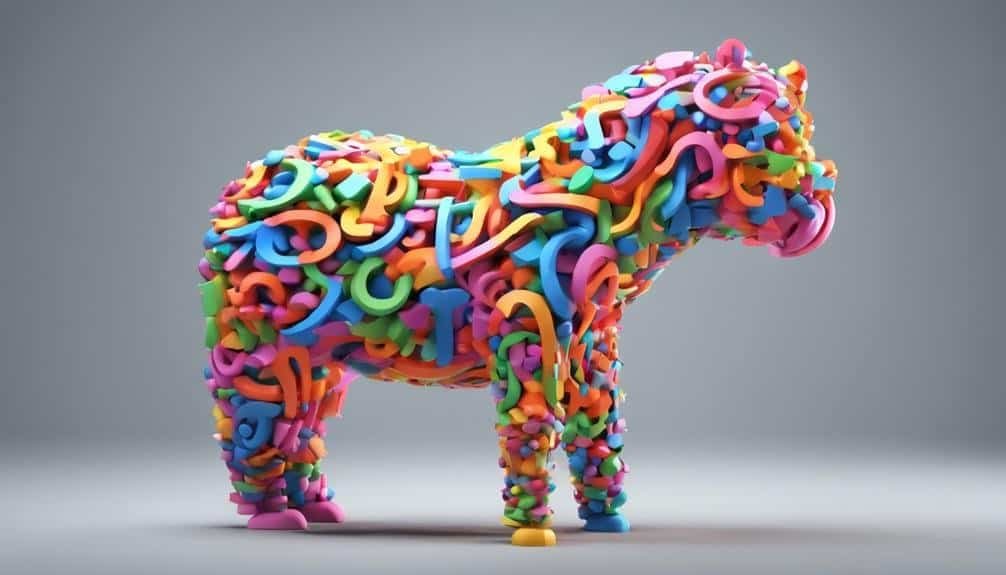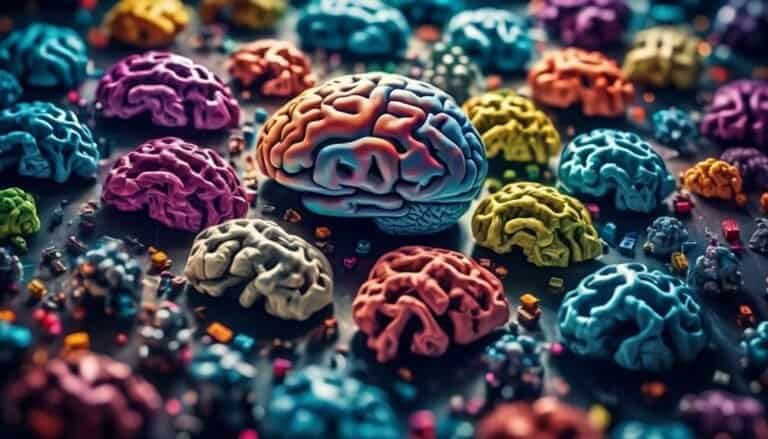Dyslexia: Redefining Your Strengths as a Visual Thinker for Self-Development
|
Getting your Trinity Audio player ready...
|
Unlock the potential of your dyslexia by embracing your strengths as a visual thinker. Visual learners excel in processing information using visual aids and spatial reasoning. Specialized teaching methods cater to these strengths. Cognitive diversity from visual thinking fosters innovation and creative problem-solving. By harnessing your visual thinking abilities, you can approach challenges from unique perspectives, sparking innovative ideas. Overcome obstacles through visual problem-solving and excel in fields like design and engineering. Enhance self-development by utilizing mind mapping, creative problem-solving, and pattern recognition. Discover more about leveraging your unique strengths for growth.
Key Takeaways
- Embrace cognitive diversity for innovation and growth.
- Utilize visual thinking for enhanced problem-solving and creativity.
- Overcome challenges with visual problem-solving strengths.
- Develop self through mind mapping and creative solutions.
- Leverage visual storytelling for effective communication and self-improvement.
Understanding Dyslexia and Visual Thinking
Understanding dyslexia involves recognizing the unique cognitive processing differences that impact individuals with this learning disability, particularly in the domain of visual thinking. Dyslexic individuals often exhibit strengths in visual learning techniques, where they excel in processing information through visual aids and spatial reasoning.
Research suggests that these individuals may have enhanced creative and problem-solving skills due to their ability to think in pictures rather than words. This cognitive advantage can be harnessed through specialized teaching methods that cater to their visual strengths, such as using color-coded materials, mind mapping, and visual storytelling approaches.
Embracing Cognitive Diversity for Growth
Recognizing and leveraging the cognitive diversity stemming from visual thinking in dyslexic individuals can greatly contribute to personal and professional growth opportunities. Embracing the uniqueness of visual thinking allows for the fostering of innovation, leading to new perspectives and solutions. Research shows that embracing cognitive diversity can enhance problem-solving abilities and drive creativity in various fields. Dyslexic individuals, with their visual thinking strengths, offer a different lens through which to approach challenges, sparking innovative ideas and strategies.
To illustrate the impact of embracing cognitive diversity, consider the following table highlighting the benefits of incorporating visual thinking in personal and professional development:
| Benefits of Embracing Visual Thinking for Growth |
|---|
| Enhances creativity and innovation |
| Encourages out-of-the-box thinking |
| Improves problem-solving skills |
Harnessing Visual Thinking for Creativity
Harnessing the power of visual thinking can greatly enhance creativity and problem-solving capabilities in individuals with dyslexia. Research suggests that visual thinkers often have a unique ability to approach challenges from different perspectives, leading to innovative solutions. By tapping into their visual strengths, individuals with dyslexia can discover a world of creativity exploration and visual innovation.
Visual thinkers excel in connecting ideas through images, diagrams, and spatial representations. This cognitive style allows for a more holistic understanding of complex problems and facilitates the generation of out-of-the-box solutions. Studies have shown that visual thinking can stimulate divergent thinking, enabling individuals to explore a wide range of possibilities when faced with a problem.
Moreover, visual innovation can be a powerful tool for enhancing creativity in various fields, such as art, design, and technology. Embracing visual thinking not only leverages the strengths of individuals with dyslexia but also fosters a culture of innovation and creativity in society. By harnessing their unique visual abilities, individuals with dyslexia can make significant contributions to the creative landscape.
Overcoming Challenges Through Visual Strengths
Through their unique visual strengths, individuals with dyslexia can effectively navigate and conquer challenges in various aspects of their lives. Research indicates that visual problem solving is a prominent strength among individuals with dyslexia. This ability allows them to approach problems in a holistic and creative manner, often leading to innovative solutions that others might overlook. By leveraging their visual thinking skills, individuals with dyslexia can excel in fields such as design, architecture, and engineering, where the ability to visualize complex structures or concepts is essential.
Moreover, visual storytelling is another powerful tool that individuals with dyslexia can use to overcome challenges. Through the use of images, diagrams, and other visual aids, they can communicate their ideas in a clear and impactful way. This skill not only enhances their ability to express themselves but also enables them to engage with others more effectively, fostering better understanding and collaboration in both personal and professional settings. By embracing their visual strengths, individuals with dyslexia can turn challenges into opportunities for growth and success.
Self-Development Strategies for Visual Thinkers
Visual thinkers with dyslexia can enhance their self-development through tailored strategies that capitalize on their unique strengths in problem-solving and communication. Leveraging mind mapping, a technique that visually represents information in a hierarchical structure, can be particularly beneficial. Mind mapping allows you to organize thoughts, make connections between ideas, and see the bigger picture, enhancing problem-solving skills.
Innovation plays a pivotal role in self-development for visual thinkers. Embracing your ability to think outside the box and approach challenges from different angles can lead to creative solutions. Visual representation is key in this process, as it can help you break down complex problems into simpler components and identify patterns that may not be immediately obvious through traditional linear thinking.
Conclusion
To sum up, embracing dyslexia as a form of visual thinking can lead to self-improvement and growth. Research suggests that individuals with dyslexia often possess unique strengths in creativity and problem-solving due to their visual processing abilities.
By harnessing these strengths and overcoming challenges, visual thinkers can unleash their full potential and thrive in various aspects of life. Embracing cognitive diversity isn't only empowering but also essential for personal and professional success.








